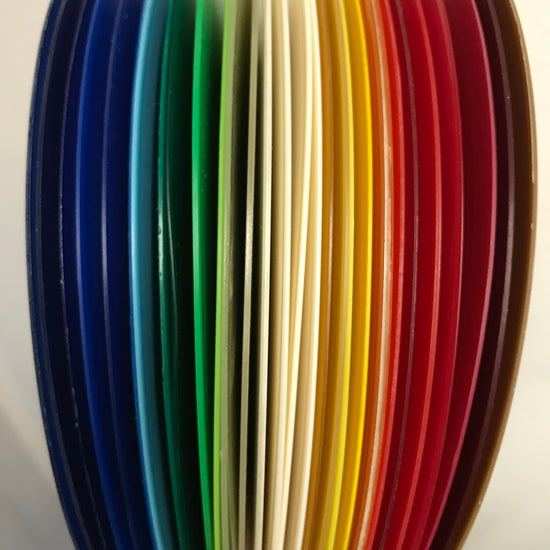Coloured vinyl has been around since the mid-20th century. The first known coloured records date back to the 1920s, but the practice became more widespread in the 1960s. During this time, labels used coloured vinyl for promotional purposes, creating eye-catching records to attract attention. The trend continued through the years, with coloured vinyl becoming a popular choice for limited edition releases and collector's items.
Many collectors have a section of their collection dedicated to the colourful and artistic world of colour and picture vinyl. A great number of new releases are pressed on vibrant coloured vinyl, and for some collectors, the design of the vinyl can be more important than the music they hold. But just how long have coloured pressings been around and where did they come from?

Some of the very first coloured records were blue 78s made by Columbia in the 1930s, like the one above.
While coloured shellac records were not as common as the standard black ones during the 1920s and 1930s, there were occasional releases with colour variations. These were often special editions or promotional items, and they didn't represent a widespread industry practice.
The use of coloured shellac was primarily for aesthetic purposes rather than a systematic approach to categorizing records by genre or any other criteria. The colours were typically muted, and variations included shades of brown, red, blue, and green.
In the 1940s, RCA began to press 45s in seven different colours according to their genre, such as green for country and western and yellow for children’s. The 45 format was introduced in 1949 in order to compete with Columbia's LP format.
However, RCA brought this to an end fairly quickly, due to pricing concerns as well as rationing after the war. It was far more efficient and cost-effective to press all (or the vast majority of) records the same colour.
There are a few likely reasons that black is the colour that the industry settled on. These include the ability to see any scratches or damage and the carbon in the dye aiding in reducing static and dust build-up.

One style of coloured vinyl that many of us assume to be a rather more modern invention is the multicoloured or ‘splatter’ vinyl. Splatter vinyl records are a type of coloured vinyl characterised by vibrant splatters or streaks of contrasting colours throughout the record. The creation of splatter vinyl involves mixing different colours of vinyl pellets together, resulting in a visually striking and unique pattern when the record is pressed.
The first of these was actually seen in the 1940s, with 78rpm records made by a small label called Morrison Records in the USA.

The beauty of multicolour records is that no two records will ever come out the same, which just furthers the rarity and often personal nature of collections. Splatter and multicolour vinyl has boomed in popularity in recent years.

Standard-coloured vinyl is manufactured in the same way as black, just using different coloured pellets and pucks on the press.
Multicoloured, however, is a slightly longer process where pellets of one colour are added to the initial puck, enabling the colour to be randomly pressed throughout the record.
Watch the video below to see a video showing one manufacturer's process.
Many modern artists will only release their music on coloured vinyl and in limited edition releases. They will often release different coloured versions of records for availability on specific websites or shops, helping to promote independent stores in the process.
This has inspired a new generation of ‘completionists’ as fans attempt to own every version of a release that exists.
While back in the 70s and 80s this ‘completionist’ itch was scratched by collecting different pressing with unique matrix numbers, or different countries’ pressings, in the 21st century collecting the whole set of coloured vinyl has been added to that list and arguably partially driven the resurgence in vinyl.







